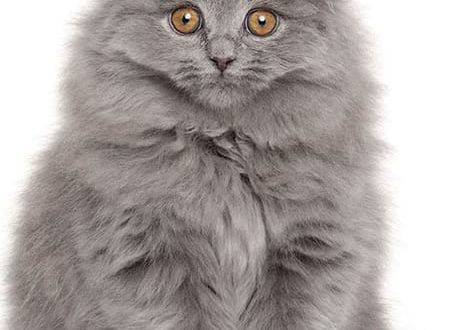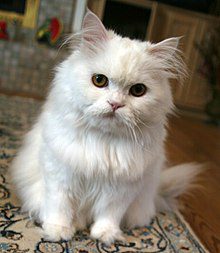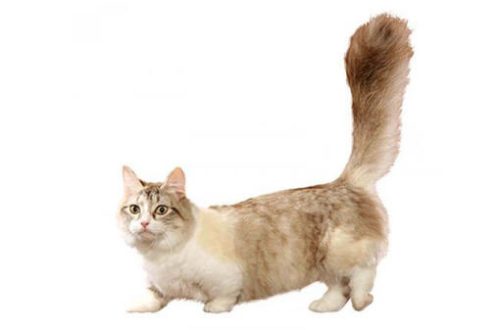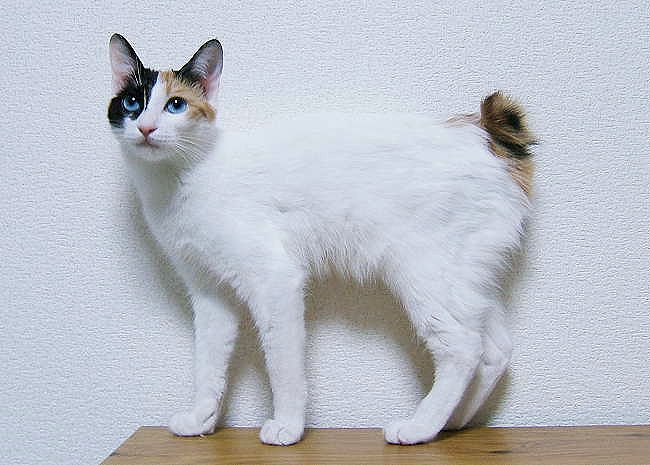
Japanese Bobtail
The Japanese Bobtail is a native cat from the Land of the Rising Sun with a short pompon-shaped tail.
Contents
- Characteristics of Japanese Bobtail
- Basic moments
- History of the Japanese Bobtail breed
- Video: Japanese Bobtail
- Japanese bobtail breed standard
- Character of the Japanese Bobtail
- Education and training
- Maintenance and care
- Health and disease of the Japanese Bobtail
- How to choose a kitten
- Japanese bobtail price
Characteristics of Japanese Bobtail
| Country of origin | Japan |
| Wool type | shorthair and longhair |
| Height | 25–30 cm |
| Weight | 2.5–5 kg |
| Age | 12–16 years old |
Basic moments
- The breed exists in two varieties: short-haired (more preferred) and long-haired.
- Japanese bobtails are creatures with fantastic curiosity and super jumping ability, so perfectionists who dream of an imposing sofa cat are likely to be disappointed in them.
- Despite the fact that Japan is considered the birthplace of the breed, it received its official name from American felinologists.
- It was the Japanese bobtails that served as the prototype for the famous maneki-neko mascots (literally from Japanese – “inviting cat”), designed to bring good luck in trade transactions and invite customers. Traditional figurines are a well-fed purr with a paw raised in greeting, which has a certain meaning. The fact is that in a relaxed state, Japanese bobtails like to keep one of their front legs suspended and freeze in this position for a long time.
- Almost three centuries of freedom and uncontrolled crossbreeding with street cats have benefited the Japanese Bobtail. In particular, modern representatives of the breed are distinguished by enviable health and do not suffer from genetic ailments.
- The short fluffy tails of the Japanese Bobtail are very sensitive, so any careless touch to this part of the body causes pain and discomfort to the animal.
- Japanese Bobtails are one of the few cat breeds that do not perceive water procedures as a catastrophe of a universal scale.
- In the Land of the Rising Sun, tricolor bobtails were especially revered. Usually these were white cats with black and red spots randomly scattered over the coat – the so-called mi-ke coloring.
- The hunting instincts are still strong in Japanese Bobtails, so they love to catch insects and small animals. For animals living in city apartments, such excitement is fraught with injuries: a cat that is carried away can easily jump out a window or fall off a balcony.
- The breed is not very friendly to strangers, so don’t expect the Japanese Bobtail to rub against the legs of a random guest who drops by for a cup of tea.
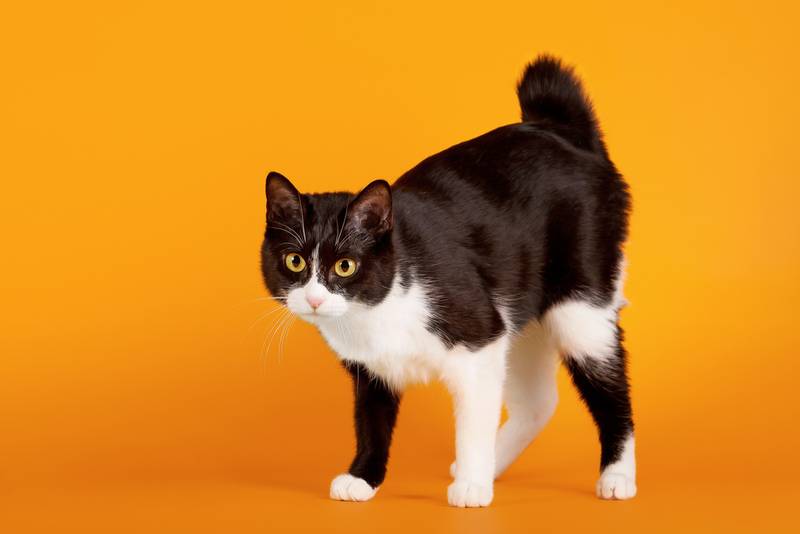
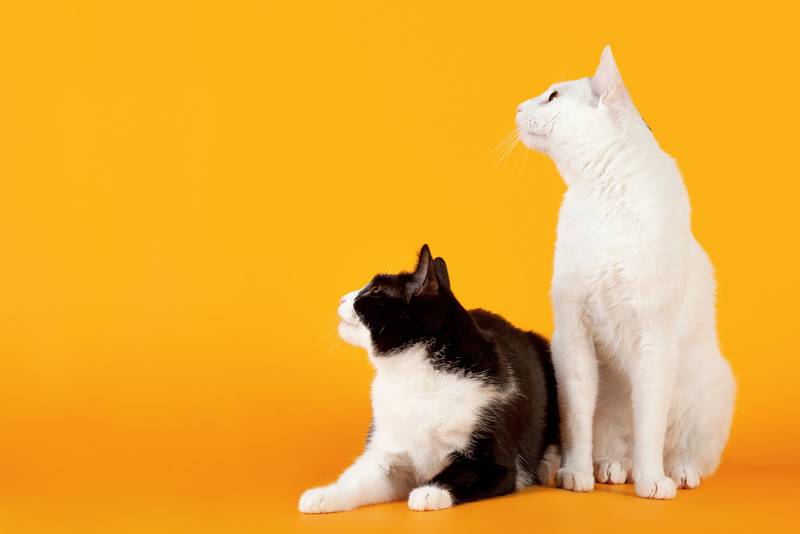
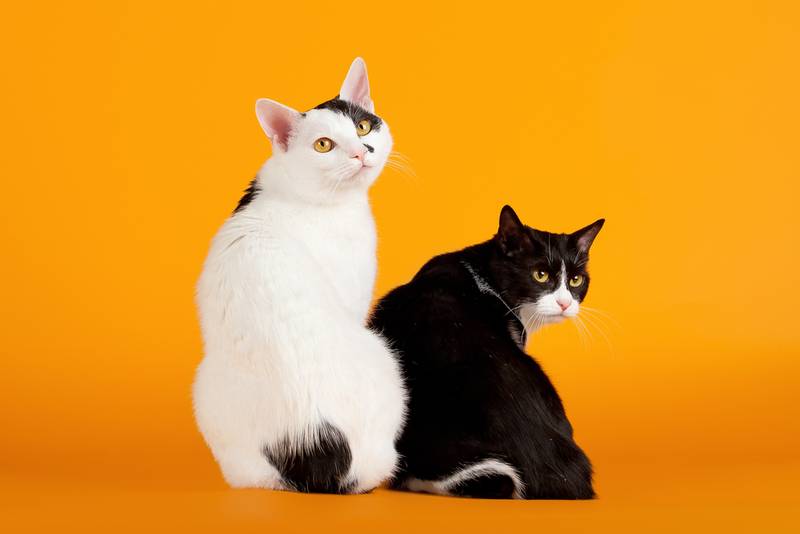

The Japanese Bobtail is a surprise cat, a friendly, albeit a little unpredictable “Asian”, masterfully painting a monochrome routine in all the colors of the rainbow. Yes, he is a little naughty and restless, but at the same time an excellent psychotherapist and storyteller. In Russia, the Japanese Bobtail breed remains relatively rare, so owning its representative is already a great success. In addition, the character and habits of these mustachioed “islanders” are absolutely original, so you can study and comprehend the secrets of the cat’s soul for years, or even whole decades. Japanese Bobtails are very stubborn and active, you will not get bored with them. According to ancient Japanese belief, all evil accumulates in the tail of a cat, therefore, the shorter the tail, the less bad things in the animal and the more luck the owner has.
History of the Japanese Bobtail breed
Japanese Bobtails are over a thousand years old. It is assumed that the first mustachioed mousers arrived on the islands from China, but they looked different then, and the tails at first had a normal length. Subsequently, as a result of a gene mutation, this part of the body has lost the form to which we are accustomed. So, the classic tail was replaced by a short “squiggle”, disguised as a “pompom” with airy fur. The Japanese, mired in folk signs and superstitions, considered such a change a good sign: long tails in this part of Asia were never welcomed and identified with a dark, evil entity. Well, since in the ancestors of bobtails this section of the spine was of small size, the cats were given a “green light” for reproduction.
In national culture, traces of Japanese bobtails have been traced since the 16th century, when Asian artists discovered ideal sitters in cats and began to depict them on their canvases. By this time, the bobtails manage not only to ingratiate themselves with the Japanese rulers, but also completely occupy the palace chambers and country residences of the emperor, as well as his entourage.
It is not known how long the breed would have managed to maintain its privileged status, if not for the large-scale invasion of rodents that flooded the Land of the Rising Sun in 1602. Driven by hunger, the rats mercilessly dealt with the food supplies of the townspeople, mulberry trees and even silkworm larvae. To stop the mouse lawlessness, the emperor made an extraordinary decision: the ruler issued an urgent decree instructing the owners of cats to release their fluffy wards into the city streets. Thanks to this, the Japanese bobtails received complete freedom of action in terms of reproduction and “pumping” the genotype.
The breed owes its move to the USA and European countries to the American breeder of Abyssinian cats and part-time leading CFA specialist Elizabeth Freret. Despite the fact that Japan’s self-isolation had sunk into oblivion by that time, the Asians were clearly in no hurry to share their short-tailed mousers with the rest of the world. Nevertheless, in 1967, the woman managed to buy three Japanese Bobtails and deliver them to America. Subsequently, a few short-tailed purrs, taken out of Japan almost by smuggling, joined the mustachioed “troika” of Mrs. Freret. It was they who subsequently became the main producers of the American line of the breed.
In 1968, shorthaired Japanese Bobtails were standardized with CFA registration. This was a serious progress, since in the homeland of cats they were not fond of keeping records, preferring to breed animals without any paper formalities. As for long-haired individuals, their path to recognition by felinological associations turned out to be several decades longer. At first, too fluffy kittens, slipping in litters of bobtails with short fur coats, were mercilessly culled. However, after referring to historical sources, it turned out that at the court of the Japanese emperor, long-haired bobtails were bred on a par with their short-haired counterparts. As a result, the variety received the right to exist only in 1991, and then after the insistent requests of the breeders.
Video: Japanese Bobtail
Japanese bobtail breed standard
The Japanese Bobtail is a long-legged, muscular handsome man with an oriental muzzle and a funny pom-pom instead of the usual tail. From an aesthetic point of view, males look the most advantageous: they are usually larger and heavier than cats. However, at the exhibitions, the “girls” of the Japanese Bobtail are also not deprived of attention, which allows them to periodically acquire champion diplomas. The weight of Japanese Bobtails should be 5-7 kg for cats and 4-5 kg for cats.
Head
The skull of the Japanese Bobtail resembles an equilateral triangle in outline. In general, the head of the animal is characterized by high cheekbones and sculptural contours. The vibrissa pads stand out clearly.
Nose
Wide, rather long, with a shallow transition to the forehead.
Eyes
The wide-open, but not bulging, eyes of the Japanese Bobtail are set slightly obliquely and have the shape of a regular oval.
Ears
Large, upright, widely spaced. It is desirable that the inner surface of the ear cloth is well pubescent, and there are tassels on the ear itself.
Frame
The Japanese Bobtails are built quite harmoniously. The body of the cat is long, but not massive and not too fragile. In general, the animal looks slightly lean, but not emaciated.
limbs
The high legs of the Japanese Bobtail have different lengths (the rear ones are longer than the front ones), but this does not “break” the top line, that is, the back of a standing cat remains in a pronounced horizontal position, without a pronounced slope. The paws of the animal are oval, well assembled.
Tail
The Japanese Bobtail has a swirling tail resembling a fur ball, the length of which in the straightened position should not exceed 7.6 cm. Usually the “configuration” of this part of the body is unique for each individual cat. However, there are several common breed types of tails, among which are twisted, knotted, corkscrew and hooked variants. Depending on the direction of the curl, the tails of Japanese bobtails are divided into chrysanthemums and spirals. In the first case, the tail vertebrae are arranged in a circle, forming a regular ring, and in the second case, the bend has an open shape.
Wool
Shorthair Japanese Bobtail coats look very neat due to the soft semi-long hair and the almost complete absence of undercoat. Long-haired cats have the same silky hair, but longer. In addition, the “clothing” of representatives of the second variety is often heterogeneous. For example, a relatively short coat in the shoulder area can gradually lengthen towards the tail and paws, forming light “knickers” on the hips.
Color
The Japanese Bobtail can have any coat color, except for obvious hybrid variations such as color point, chocolate, lilac and ticked tabby.
Disqualifying vices
The vast majority of Japanese Bobtails lose the right to participate in exhibitions due to malformations of the tail. In particular, if the tail is absent as such, slightly pubescent and does not look like a pom-pom, there is no point in showing the animal to the breeding commission. An exhibition career will not work out for cats with the so-called retracted bobtail effect, when the pom-pom is removed from the back at a distance of 2.5 cm.
Character of the Japanese Bobtail
If you are looking for a sedate Oriental in a Japanese Bobtail who condescendingly allows himself to be loved in exchange for treats and respect, then you are in the wrong place. The Asian mentality of the breed, of course, is present, but in such a muted form that it often begins to seem as if it never existed at all. Hot temperament, irrepressible curiosity and a passion for adventure – these are the main qualities that have provided the Japanese Bobtail with a reputation as the most unpredictable pets. Moreover, cats are especially uncontrollable in childhood: overwhelmed by a thirst for new knowledge and impressions, kittens sometimes go for tricks that you don’t expect from them.
The Japanese Bobtail may sincerely love the owner, but this does not oblige him to watch TV shows with him and work as a guard of the master’s knees. And all because the fluffy “samurai” always has a couple of interesting activities in stock that require immediate intervention. What kind of TV is there when such prospects loom on the horizon! Of course, from time to time the cat is not averse to cling to the owner’s side and talk heart to heart, but it is unlikely that it will be possible to keep him next to him against his will.
In an informal setting, Japanese bobtails like to try on the role of fluffy whistleblowers, so don’t even try to tightly close interior doors and slam lockers tightly: they will open it anyway, carry out an audit, and still remain dissatisfied. Get used to the fact that purrs will not ask permission for another prank either. If a Japanese bobtail liked a butterfly fluttering on a chest of drawers, he will get it, and he doesn’t care that somewhere in the background you make scary eyes and wave something there.
In general, the Japanese Bobtail is an incredibly talkative breed, and cats prefer to share their impressions not with fellow tribesmen, but with a person. Are you ready to listen to oriental legends in the evenings, told in a low, hoarse voice? However, even if they are not ready, the Japanese Bobtail does not care: he decided – he will tell, and you decide for yourself what to do with the information received. Representatives of this breed do not suffer from loneliness from the word “completely”, so feel free to go to the office or visit – the pet will be fine, and most importantly, will spend time without you. True, it is possible that later it will be necessary to eliminate the consequences of cat entertainment, although it is difficult to expect outright crime from Japanese bobtails – except perhaps when the kitten is very small and desperately misses you.
Japanese Bobtails are friendly cats, willingly accepting other purrs into their circle. Preference is always given to natives of the Land of the Rising Sun. By the way, if two “Asians” settled in the house at once, get ready for a conspiracy, because group crimes for these fluffy “yakuza” are an incomparable thrill. Cats usually do not conflict with dogs, so you can take a Japanese Bobtail in the company of an already existing dog at home without unnecessary fears, of course, provided that your second pet is not a desperate cat-hater.
Education and training
On the one hand, Japanese Bobtails are stubborn to look for. On the other hand, they are terribly smart and in training reach unprecedented heights. So, if you want to teach the cat a couple of tricks, catch the right moment when the pet is in a good mood. If you manage to arouse the interest of the purr and intrigue him with his activities – consider that the most difficult part of the work is done.
As for the selection of exercises, the Japanese Bobtails like to fetch rubber toys, catch an imaginary fly on command, and do a stand on their hind legs. It is easy for the breed to jump through a gymnastic hoop or barrier. Since cats often “fly” from the closet to the sofa and back in their free time, it will not be difficult to work out this skill on any sports equipment, including the same hula hoop.
On the street, Japanese bobtails are walked almost like dogs, that is, on a harness. True, provided that you have previously introduced the cat to this subject. Usually, in order to teach the “Japanese” to walk on a leash, a traditional technique common to all cat breeds is enough. First, show your pet a harness, let it smell. Then leave the strap near the cat bed so that the animal gets used to it. At first, put on a harness at home and only for a few minutes. If the Japanese Bobtail shows suspicion and does not want to climb into the collar, you can appease him with a piece of some yummy.
Maintenance and care
Japanese Bobtails have little to no undercoat. For a breeder, this feature is one big plus: a minimum of hair on the carpets during the molting period, which cannot be said about the cats themselves. Deprived of a protective downy layer that insulates the body from environmental influences, the “Japanese” are very sensitive to any temperature drops and drafts. For this reason, find a really warm and sheltered place for the cat’s basket. Only without fanaticism: a couch right next to the radiator is a serious overkill.
Hygiene
As for the care of the Japanese Bobtail, it all depends on which of the varieties of the breed you are the owner of. If a short-haired bobtail lives in the house, you can relax, because a representative of this family will need to comb the “fur coat” no more than once a week. Long-haired “Japanese” will have to pay more attention, because it is necessary to walk over their muscular bodies with a comb every day. In addition, molting in long-haired cats is always more pronounced and mostly in the spring.
Bathe Japanese Bobtails only in those situations where washing is really indispensable. These “Asians” are not afraid of water, but you will have to tinker in the process, if only because the wool of the breed has a strong water-repellent effect. Accordingly, it will take much more time to try to wet the cat’s “fur coat” than directly to the washing process. Cleaning the ears of the Japanese Bobtail follows the classic scenario: once a week, look into the cat’s ear canal. If it is dirty and smelly, go over the inside of the ear canopy with a tissue soaked in alcohol-free veterinary lotion.
In especially severe cases, ear drops for cats will help, softening dried sulfur and dirt. Just do not go to extremes, trying to penetrate into the very depths of the passage – you risk damaging your hearing organs. Trimming the claws of the Japanese Bobtail is an optional event. If the pet is accustomed to the scratching post and uses it regularly, this is enough. But rubbing the eyes of a cat in the morning with phyto-lotions or herbal infusions should become a tradition.
Feeding
Japanese bobtails are not supposed to have any special “Asian” menu. Short-tailed purrs eat everything that other breeds do, that is, lean meat, boiled sea fish fillet and liver, which are recommended to be “reinforced” with viscous cereals based on oatmeal flakes and buckwheat. However, like true Japanese, bobtails often prefer seafood than cold cuts. Once a week, the cat’s diet must be additionally “fortified” with chicken yolk, quail egg, fresh herbs or wheat germ. Skimmed dairy products are also good for the breed, as well as fruit and vegetable chips.
The simplest and easiest way to feed a Japanese Bobtail is to transfer it to industrial “drying”. However, most kittens from catteries by the time they move to a new home already “sit” tightly on it. Therefore, the only thing that is required in such a situation from the new owner is to fill the plate with dry croquettes in a timely manner and pour fresh water into the bowl.
Health and disease of the Japanese Bobtail
Like most native breeds, Japanese Bobtails are healthy cats with good immunity. There are no hereditary diseases for representatives of this family, so if you properly care for the animal, vaccinate it in a timely manner, pay due attention to a balanced diet, and also do not allow the cat to catch a cold (remember about poorly warming wool), you won’t have to go to veterinary offices with him.
How to choose a kitten
Unlike their Kuril relatives, Japanese Bobtails are still exotic in Russia, and nurseries breeding them can be counted on the fingers of one hand. For example, for a given period of time, only one organization that has WCF and CFA registration, as well as an official website on the Internet, is confidently leading – this is the cattery “Innosima”.
By the way, do not expect the Japanese Bobtail to be sold to you right away. Firstly, due to the relative rarity of the breed, kittens have to be booked long before birth. Secondly, in most nurseries they prefer to give promising babies to professional breeders and felinologists, leaving individuals with defects in appearance to ordinary buyers.
General rules for choosing a Japanese Bobtail:
- do not be surprised by the unusually large dimensions of the kittens. Japanese Bobtails grow and gain weight faster than most of their relatives;
- evaluate the appearance of a potential pet, referring to the breed standard. Pay special attention to the tail configuration, which is a defining characteristic of the Japanese Bobtail;
- do not neglect the opportunity to get acquainted with the producers of the litter. So it will be easier to understand what exactly awaits you when the pet reaches full physical maturity;
- veterinary passport, metrics of a Japanese bobtail kitten, pedigrees of his parents – during your stay in the cattery, all these documents should be carefully studied.
Japanese bobtail price
The cost of Japanese Bobtail kittens traditionally depends on the class of the animal (breed, show, pet) and the champion titles of their parents. The average price for a club kitten from a certified couple is 600-750$. Cheaper options tend to have a more modest pedigree, and sometimes, in addition, external defects.



